I am deeply conflicted about “Maine Women Pioneers III: Vanguard” at the University of New England in Portland. While it’s a rare opportunity to see a number of installations shown as a group, it will be an incoherent and potentially off-putting experience for many.
“Vanguard” is ostensibly a follow-up to a pair of 1980s shows, but it’s simply not realistic to assume any continuity at that fuzzy distance – especially when there isn’t documentation or posted explanation in the gallery.
Nor is it made clear that “Vanguard” is the first of four segments that will mounted sequentially through July 21.
Documentation in the gallery wouldn’t matter so much if the works weren’t so intentionally evasive.
In some ways, “Vanguard” is a victim of feminism’s transcendence from revolutionary ideology to an established philosophical tool for prioritizing cultural perspectives.
Feminism is now not only smarter and more successful, but far subtler. Parsing how “Vanguard” relates to feminism or the cultural role of women in Maine isn’t easy.
Alicia Eggert’s “Pulse Machine,” for example, is a kick drum with a digital display counting down from 2,445,932,354 (when I last saw it) to zero at 60 beats per minute. It is an analog of the lifelong heartbeats of a person – 78 years. What’s notable is the focus on an average life rather than an exceptional one.
Eggert’s “NOW” is the only piece with a distractingly direct line on women’s culture: If you type “now” into Google, National Organization for Women comes up first.
It’s what I thought immediately, but I cannot believe it’s anything other than chance. “NOW” is a series is red line segments that spin on motors and pause in the digital form of “NOW” every couple of seconds or so. It seems more of a here-and-now Zen idea than a salute to a women’s organization. Still.
Susan Bickford’s “Torndado” is more about subtle, personal perspective than broader politics. It’s a complex group of machines, wires, projectors, speakers, computers, sensors and more that create an incomprehensibly complex work of art that travels from the gallery’s main floor to occupy the entire basement.
Supposedly, the piece is about the passing of her father, but just because this is what drove Bickford doesn’t mean the viewer will experience it that way. This distinction is why this bewildering work is largely successful.
There is an umbrella over a wishing well, a camera running down to the basement installation, projections making a shadow theater involving you while you move a wire sculpture, etc. It’s like “The Wizard of Oz,” in which the main character (you) has a key subconscious role in the psychological resolution.
It’s great if Bickford’s ambitiously crazy complexity is your kind of thing – but it’s not for everyone.
Signage indicates that Amy Stacey Curtis’ giant, bossy compendium of experience-oriented installations in Winthrop that came down on Oct. 26 (“SPACE”) is part of the show. It’s an interesting but weird gesture.
Outside the gallery sit Kihua Lei’s five sculptures that are hatched/born as the weather washes the unfired clay from their biomorphic pink salt and epoxy forms. They’re conceptually great for the show, but their ugliness detracts.
Lauren Fensterstock’s long, slender wall piece of black-framed, black paper grass in charcoal replies to masculine minimalism, but it’s too slickly hermetic in this context.
The first works you see – Carrie Scanga’s drawings – make for a disappointingly workaday introduction to the show. They fail to enter (or create) the conversation despite their quietly smart bits about spaces and perspective.
Julie Poitras Santos’ work includes a performance by a feather jacket-wearing young woman who dissembled a heavy black rope and then an installation of such rope in a heap under a video of the rope writhing like black snakes. With references to Icarus’ failed escape from Minos and Penelope’s outwitting her suitors by nightly undoing her day’s weaving to extend her wait for Odysseus, this piece has potential, but it never quite ignites.
Ling-Wen Tsai’s “Sitting Quietly” is a circle of stools, each with a pair of sound-blocking earphones. Oriented to the center by a drop light, this is a great piece. It brilliantly distills the notion of communal silence. Taking off the headphones is one of the few revolutionary moments of “Vanguard.”
I was most impressed, however, with Diana Cherbuliez’s neurotically intense hair sculptures. One is a rope of her own hair (leftovers from three and a half years of brushing) long enough to hang herself that she has thrown over a nicely crafted wall gippet.
Another is a triple-mirrored box in which a quarter hemi-sphere of Cherbuliez’s intricate braids is mirrored to appear as a complete sphere. In terms of process, concept, impact and potential, the hair pieces are fantastic.
If you enjoy conceptually subtle installations or want to see edgy Maine women artists, you should visit “Vanguard.” However, if you get frustrated by intentionally evasive installations, you aren’t likely to enjoy it.
“Vanguard” takes on an important and worthy subject; it just doesn’t do enough to help new viewers appreciate the work.
But while it’s a troubled first step, “Vanguard” is ambitious enough to interest me in what’s next.
Freelance writer Daniel Kany is an art historian who lives in Cumberland. He can be contacted at:
dankany@gmail.com
Copy the Story Link
Send questions/comments to the editors.

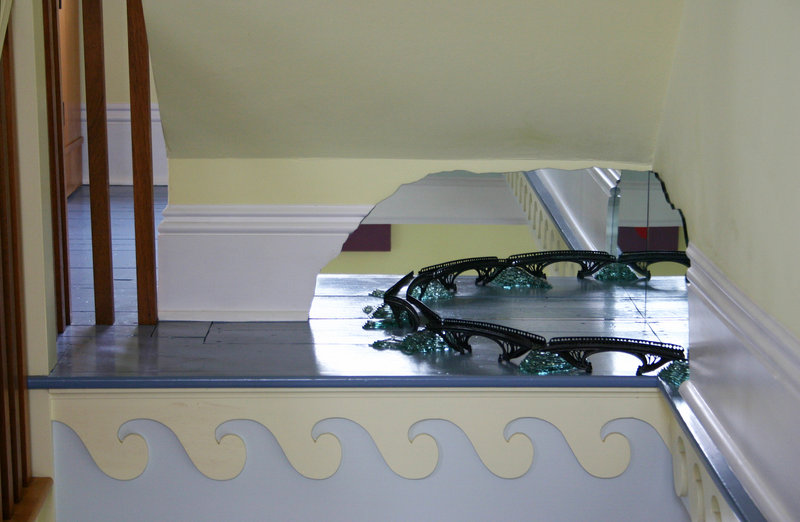
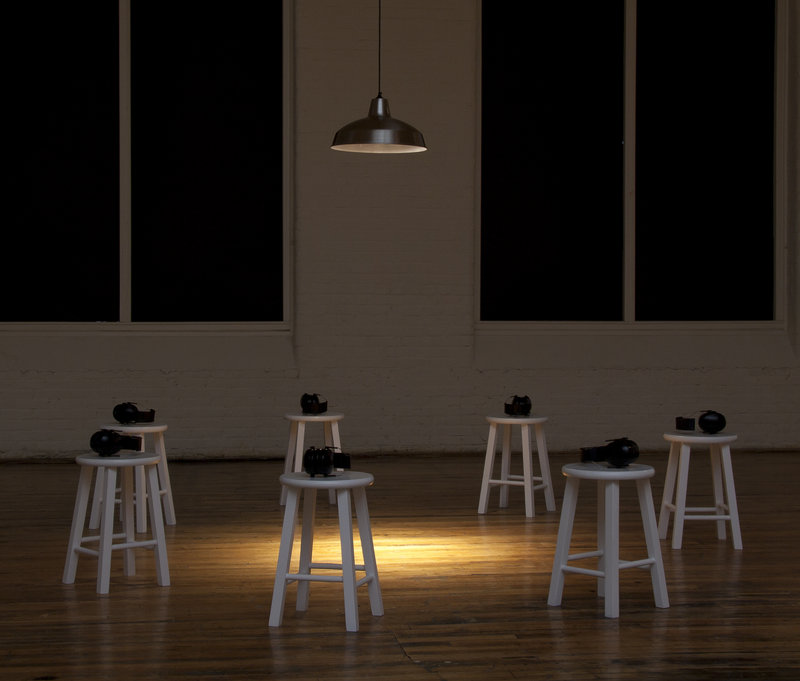
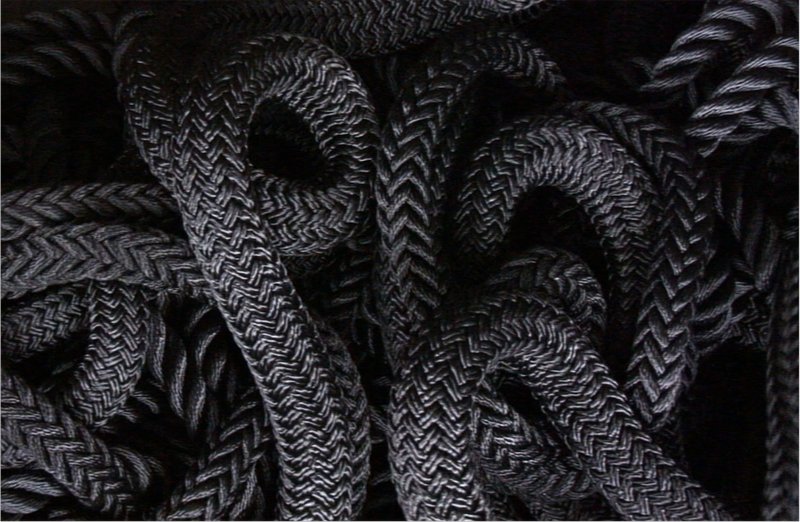
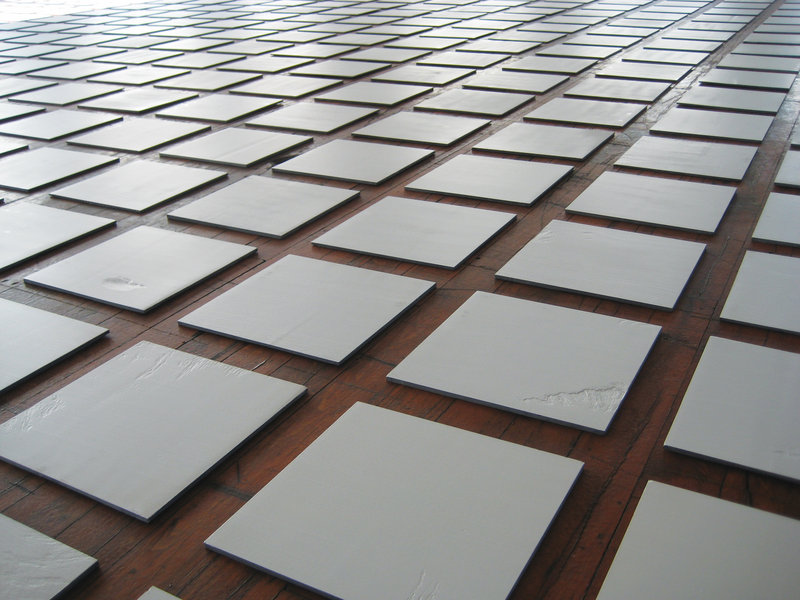
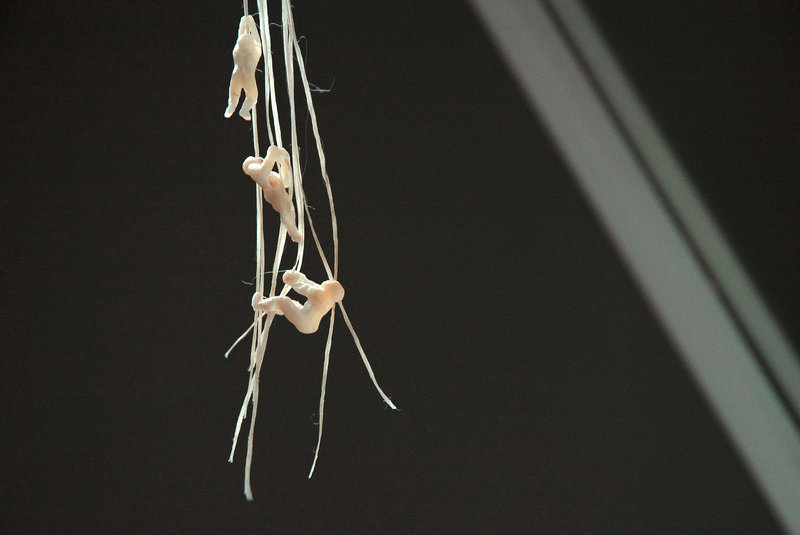

Success. Please wait for the page to reload. If the page does not reload within 5 seconds, please refresh the page.
Enter your email and password to access comments.
Hi, to comment on stories you must . This profile is in addition to your subscription and website login.
Already have a commenting profile? .
Invalid username/password.
Please check your email to confirm and complete your registration.
Only subscribers are eligible to post comments. Please subscribe or login first for digital access. Here’s why.
Use the form below to reset your password. When you've submitted your account email, we will send an email with a reset code.